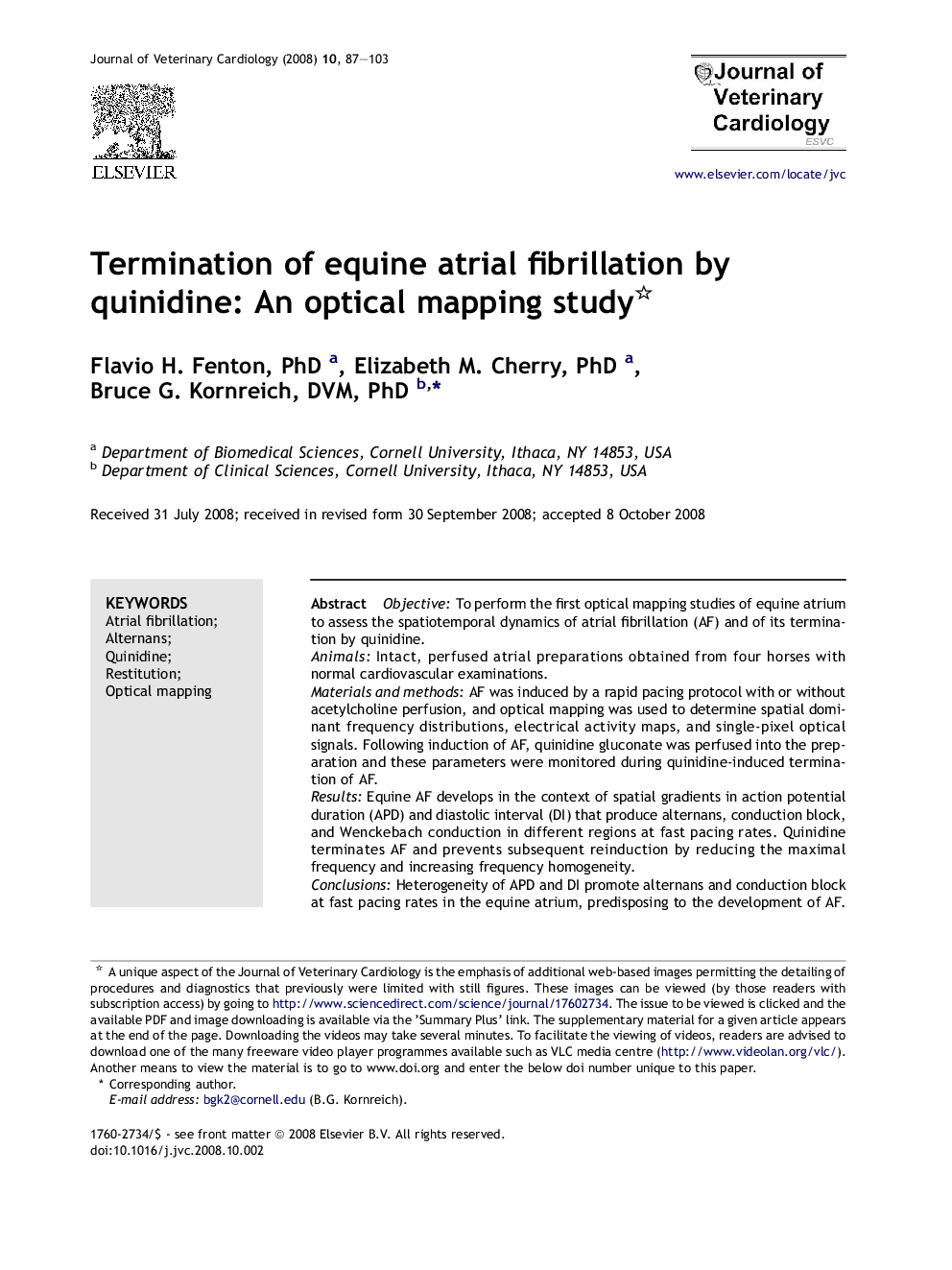| Article ID | Journal | Published Year | Pages | File Type |
|---|---|---|---|---|
| 2400298 | Journal of Veterinary Cardiology | 2008 | 17 Pages |
ObjectiveTo perform the first optical mapping studies of equine atrium to assess the spatiotemporal dynamics of atrial fibrillation (AF) and of its termination by quinidine.AnimalsIntact, perfused atrial preparations obtained from four horses with normal cardiovascular examinations.Materials and methodsAF was induced by a rapid pacing protocol with or without acetylcholine perfusion, and optical mapping was used to determine spatial dominant frequency distributions, electrical activity maps, and single-pixel optical signals. Following induction of AF, quinidine gluconate was perfused into the preparation and these parameters were monitored during quinidine-induced termination of AF.ResultsEquine AF develops in the context of spatial gradients in action potential duration (APD) and diastolic interval (DI) that produce alternans, conduction block, and Wenckebach conduction in different regions at fast pacing rates. Quinidine terminates AF and prevents subsequent reinduction by reducing the maximal frequency and increasing frequency homogeneity.ConclusionsHeterogeneity of APD and DI promote alternans and conduction block at fast pacing rates in the equine atrium, predisposing to the development of AF. Quinidine terminates AF by reducing maximum frequency and increasing frequency homogeneity. Our results are consistent with the hypothesis that quinidine increases effective refractory period, thereby decreasing frequency.
